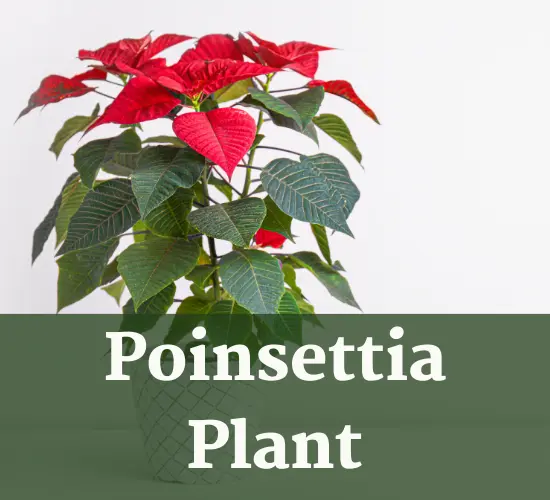Table of Contents
Poinsettia Leaves Wilting
Poinsettias(Euphorbia pulcherrima)are popular ornamental plants that are commonly associated with the holiday season. However, caring for these plants can be a challenge, especially in temperate climates.
Many factors can contribute to wilting or curling leaves, including underwatering, lighting, sudden temperature changes, or low humidity. As such, it is essential to provide proper care and maintenance to ensure a thriving plant.
This article provides poinsettia care tips that will help you keep your plant healthy and vibrant throughout the holiday season and beyond. We will discuss the causes of wilting leaves and how to prevent them, as well as the necessary care and maintenance practices for your poinsettia.
Key Takeaways

- Poinsettias require proper care and maintenance for a thriving plant
- Wilting or curling leaves can be caused by factors like underwatering, lighting, sudden temperature changes, or low humidity
- Poinsettias need indirect, bright light and consistently warm temperatures while being kept away from direct sunlight and drafts
- Proper watering techniques are essential for preventing yellow leaves and root rot, and misting, pebble trays, and humidifiers can be used to boost humidity levels.
Causes of Wilting Leaves
Wilting or curling leaves on a Poinsettia can be attributed to several factors, such as underwatering, improper lighting, sudden temperature changes, or low humidity. These factors require extra care and attention, particularly in temperate climates where the plant may not be receiving the appropriate environment to thrive. Preventing wilting involves understanding the plant’s needs and ensuring that they are met consistently.
One of the most common mistakes that can cause wilting is underwatering. Poinsettias should be watered when the top 50% of the soil is dry, but it is important to avoid both soggy and bone-dry soil.

Additionally, improper lighting can also lead to wilting. Poinsettias need indirect, bright light and should be kept away from direct sunlight.
Sudden changes in temperature, such as exposure to cold drafts or open vents, can also stress the plant and cause wilting.
Finally, low humidity can lead to curling leaves. To combat this, misting, pebble trays, and humidifiers can be used to boost humidity levels.
Care and Maintenance
One potential factor that may contribute to the health of a tropical species in temperate climates is ensuring consistent environmental conditions, but how can this be achieved?
To prevent yellow leaves and promote a thriving poinsettia plant, proper watering techniques are essential. The top 50% of the soil should be dry before watering, and it is important to avoid letting the soil become bone dry or too soggy. Overwatering can lead to root rot, which can ultimately kill the plant.
In addition to proper watering, maintaining a consistently warm temperature is also important for poinsettia care. These plants do not tolerate sudden temperature changes or drafts, so it is important to keep them away from open vents or windows. Indirect, bright light is preferred, but direct sunlight can damage the leaves.
If the leaves start to curl or brown, the plant may need a boost in humidity. This can be achieved through misting, using pebble trays, or investing in a humidifier.
By following these care and maintenance tips, poinsettia plants can thrive and add a touch of holiday cheer to any home.
Frequently Asked Questions
Can poinsettias survive outdoors in temperate climates?
Poinsettias are typically grown as indoor plants in temperate climates, as they are sensitive to cold temperatures. Outdoor survival is possible in warmer regions, but winter storage is necessary to protect the plant from freezing temperatures.
How often should a poinsettia be fertilized?
Fertilization frequency for poinsettias depends on the nutrient needs of the plant, which can vary based on soil quality and previous fertilization. A balanced fertilizer can be applied every two to three weeks during active growth but should be reduced during dormancy.
Can poinsettias be propagated from cuttings?
Poinsettias can be propagated from cuttings by using rooting hormone and placing the cuttings in a mixture of peat moss and perlite. Keep the soil moist and cover the cuttings with a plastic bag until roots develop.
What pests are common on poinsettias?
Common pests on poinsettias include whiteflies, mealybugs, and spider mites. Pest control can be achieved through natural remedies such as neem oil, insecticidal soap, and rubbing alcohol. Regular monitoring and early intervention are crucial for successful pest management.
How long do poinsettias typically bloom?
Poinsettias typically bloom for 6-8 weeks, with proper care. After blooming, prune the plant to encourage growth and reblooming. Provide regular water and fertilization, and expose it to 14 hours of darkness daily for several weeks to initiate reblooming.
Conclusion
In conclusion, poinsettias require specific care and attention to thrive, especially in temperate climates. Wilting or curling leaves can be caused by several factors, including underwatering, lighting, sudden temperature changes, or low humidity.
To ensure your poinsettia remains healthy and vibrant, it is essential to water it when the top 50% of the soil is dry, avoid direct sunlight, and keep it away from drafty areas or open vents.
With proper care and attention, poinsettias can be a stunning addition to any home or office during the holiday season.
So, don’t hesitate to give your poinsettia the care it deserves, and watch it thrive and flourish! As they say, a well-cared-for poinsettia can be the crown jewel of any holiday display.